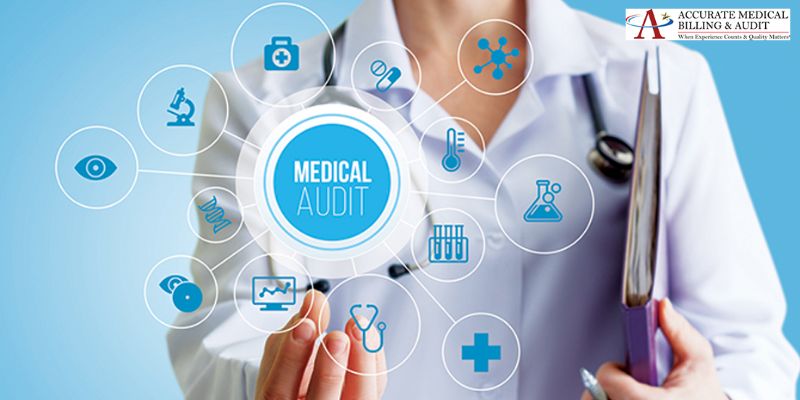Medical billing auditing is something that everyone in healthcare is doing at the moment. Surviving in such a competitive industry is necessary to help people stay compliant. Healthcare organizations process many documents, and errors have a substantial financial impact. A practice must regularly audit its medical billing to determine its efficiency and effectiveness in claims.
What Is a Medical Billing Audit?

Medical billing audit is a systematic process of examining and evaluating clinical documentation for effectiveness and reliability. This process ensures that the practice recognizes, monitors, and corrects improper billing practices by thoroughly reviewing all medical billing information submitted to payers and medical records kept by the practice.
To conduct a billing audit, many data sources are required. The practice may be needed to submit clinical records, such as lab reports, x-rays, and medical records. Financial records may also be needed when conducting a billing audit, including accounts receivable ledger, remittance advice, charge sheets, and policy-related documents.
The audits can be carried out in two ways – before or after claims are sent to payers. Audits of new providers are often conducted prospectively, and audits of current providers are often conducted retrospectively.
Approaches to Medical Billing Audit

Medical billing auditing can be done in various ways. Both an internal and external audit of healthcare billing are options.
Internal audits
A team of individuals working for the audited entity of an organization performs internal audits. These specialists regularly conduct audits to ensure that billing practices are efficient and transparent.
Internal checks are the ideal solution for large and medium-sized healthcare organizations with the resources to retain in-house auditing staff.
External audits
For external audits to be carried out, healthcare organizations must work with an external auditing body. As part of external audits, billing practices are reviewed against standards to identify any issues and give guidance on how to resolve them.
It is best for small practices needing more resources and specialists to go with external audits.
How to Prepare for Medical Billing Audit for the First Time
For deeper checks, most organizations combine both internal and external audits. External audits are more thorough and allow for obtaining an unbiased opinion. This contrasts with internal audits commonly used to assess billing accuracy and compliance.
You must take specific steps to ensure your medical billing audit goes smoothly. This ensures that the data and documentation for your medical billing are of higher quality. Laying out the auditing procedure will also be more accessible.
Here are some essential tips on how to get ready for a medical billing audit.
1. Establish precise auditing policies and practices
Let your team know when to conduct audits. They should also be aware of the appropriate procedure to follow.
For instance, you could conduct internal audits every quarter and invite an outside auditor once a year. Another element to address in advance in your policies is data processing rules.
2. Educate your staff
Teach your staff how to code and document appropriately. This is because healthcare workers such as clinical coders remain involved in record keeping despite the increasing rate of EHR adoption.
Ensure that your staff knows how to handle documentation to avoid irregularities in bills and coding. Additionally, it will improve the organization and error-freeness of your data sources while preparing your staff for future audits.
3. Be prepared for regular audits
Healthcare billing audits should be done frequently. As a result, ensure that you think about the upcoming checks when preparing for your first audit.
In addition to procedures and policies, you should schedule events and make templates and other standard documents. Taking such a thorough approach will end up saving you time.
4. Implement billing and EHR systems
Nowadays, EHR and automated billing software are two things that healthcare companies cannot avoid. It is required not only for record management, but also for auditing.
When you implement an EHR and integrate it with your billing and practice management systems, you can start connecting data from the beginning. This, as a result, makes audits better, automated, and more straightforward.
Benefits of Medical Billing Audit
An audit of your medical billing should not be done for a specific reason or because of motivation. There are many benefits to doing it. Below are some advantages of medical billing audits.
1. Coding benefits: The billing audit benefits the coding team by enabling them to find and fix errors before the insurers or government go against it. The confidence of the coding staff is increased, and they are more likely to use current procedure codes when they have someone to turn to who can spot errors and give instructions on how to fix problems.
2. Administrative benefits: Medical billing audits help the administrative staff by ensuring that genuine and accurate claims are submitted correctly. With appropriate billing for frequently documented procedures, improper unbundling habits, under-coding, and code overuse are replaced. The likelihood of a visit from an external auditor significantly decreases when policies and practices are established and followed.
3.Clinical benefits: The auditing of medical claims contributes to positively improving patient care. A focus is put on the quality of care provided by tracking and monitoring services and procedures and educating doctors on how to provide satisfying medical experiences for their patients. Patient satisfaction leads to a smoother revenue cycle and better outcomes.
Conclusion
Medical billing audits are necessary for healthcare organizations for a variety of reasons. Regular audits streamline compliance, clarify data management procedures, and improve healthcare services. The bottom line increases with accurate medical billing and coding data.






I’ve been surfing on-line more than 3 hours these days, yet I never discovered any interesting article like yours. It…